Growing and cultivating garden honeysuckle has become quite recently, but this culture immediately loved the dacnis. There are many types of honeysuckle, but all of them can be divided into two large categories: edible and decorative. In this article we will discuss the best varieties of honeysuckle, tell me how to grow it to always receive a rich harvest and a beautiful garden.
Plant Features
Despite the great popularity of the honeysuckle, its saplings are sometimes quite difficult to find on sale. This plant is noteworthy because its berries ripen for a couple of weeks earlier than the garden strawberries and at the same time have a unique chemical composition. Studies have proven that the honeysuckle helps to fight the Malokrovius, Zinga, treats the disorder of the stomach. Its juice, rich in iron and vitamins, strengthens the walls of blood vessels, warning the diseases of the cardiac system and atherosclerosis. This is one of the most powerful natural antioxidants, so the honeysuckle will be especially useful for people living in contaminated conditions, and this is almost all the townspeople.
Many varieties have high decorative qualities, so the cultivation of the honest can deliver not only a gastronomic, but also aesthetic pleasure.
I wonder: one of the most beautiful varieties - honeysuckle honeycomb. In antiquity they were associated with love and loyalty. In ancient legend, Abelare and Eloise, it is mentioned that their stone tumors were honeysuckle, forever improving them in the eternal union. In a better work about Tristan and Isolde, the latter is more than once compared with a gentle flower of honeysuckle.
The honeysuckle can reach 5 m in height, so it is often used to form a living hedge. Honeysuckle honeycomb in this regard is the best option not only because of beautiful flowering. It develops very quickly, unpretentious, gives a thick foliage of a beautiful form. If you want to create a fruitless live elevation, you need honeysuckle seedlings highly radiant, but not all high-quality shrubs ways to give edible fruits. There are exclusively decorative varieties, so it is necessary to clarify this moment from the seller.
Useful advice: Even an experienced marriage seller sometimes cannot distinguish one variety of honeysuckle from another, so it is best to buy a seating material in nurseries or people who sell the honeysuckle from their garden.
Saplighted Tips:
- Buy only those bushes, which turned 2-3 years old, then after a couple of years you can get the first harvest.
- Carefully inspect the bush branches - they should not be too dry or flexible.
- If the bark bush is peeling, nothing terrible is a feature of the plant.
- The root system must be well developed (the more powerful roots, the better).
- At the branches must be present kidney.
- Purchase at least three varieties of seedlings to multiply the honeysuckle in the future.
Varieties of honeysuckle
Which and some more than 20 years ago no one almost heard about garden honeysuckle, and today you can already choose from a huge number of different varieties. Edible honeysuckle gives rich yields of useful and delicious berries, from which you can make compotes, add to baking or just freeze for the winter. Decorative honeysuckle will decorate any garden. She does not take much space and undemanding in care.
Popular varieties:
- Wiliga is named after the river of the same name. Since the variety was removed in the north, it is distinguished by high frost resistance and is able to withstand cooling to -50c. It grows up to 2 m in height, unpretentious, weakly crept on, in berries a lot of vitamin C, a, nicotinic acid. Fruits obliged about 3 cm with pronounced tart taste. From one bush can be removed annually up to 2.5 kg of berries.
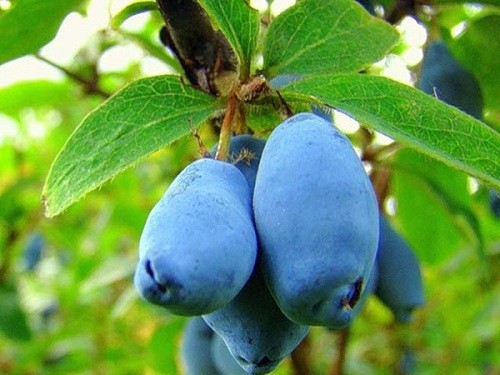
- Gestlika is the latest sort of sortiness, characterized by immunity to frosts during flowering. On the free section, the bush can grow up to 2 m in height, but if the landing thickened, Gestka will turn out to be low, which will in no way affect the yield. This variety can be used for decorative purposes, since it has a very beautiful dark green foliage. From one bush can be collected up to 2.5 kg of berries.
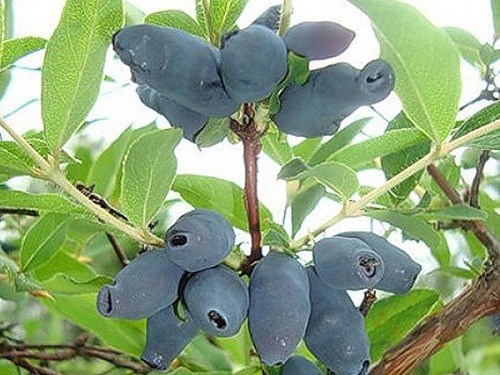
- Honeysuckle honeycomb - decorative grade up to 5 m high with opposite wide-eallic leaves of dark green color. It has a very beautiful blossom and pleasant aroma. Blossom begins in the first days of June and lasts up to 25 days. Orange berry fruits come to the flowrels, which are spectacularly stand out against the background of foliage.
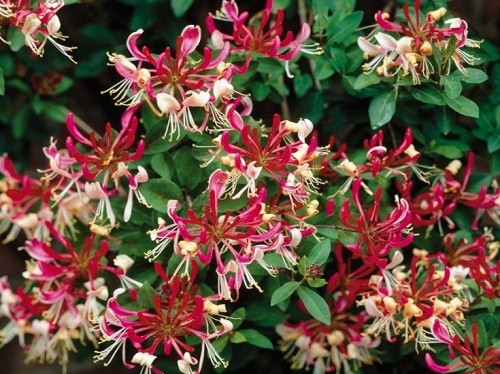
- Cinderella is one of the most fruitful and early grades of edible honeysuckle. Begins to give a harvest for the second year after landing. Grow up to 70 cm in height, loves the neighborhood with the varieties of amphora and the Giant. Fruits Cinderella Middle Size with a light sour taste and a light strawberry aroma. From one bush, you can collect up to 3 kg of berries.

- Morena - the variety is notable because the berries are last saved on the bush and do not appear. The bush itself grows up to 1 m, has a bright green foliage, assembled into a squat crown. Moraine fruits are large without bitterness with thin translucent peel. However, this variety will not call at high-yielding - from one bush to 1.5 kg of berries.
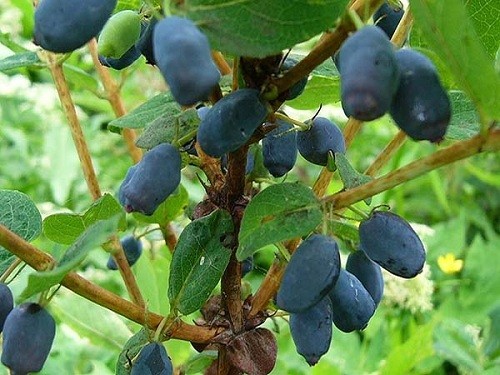
- The honeysuckle is a curly - another decorative variety of honeysuckle from which beautiful living hedges are obtained. The frost resistance is not inferior to hopic. Liana can grow up to 5 m long, has short-flowing oval leaves up to 7 cm long, slightly bluish from the back side. Flowering yellow-purple flowers begins in June and lasts about 14 days. There are several decorative forms of curly honeysuckle, especially popular with gardeners: Belgian with a dense deciduous cover and late with long and lush flowering.
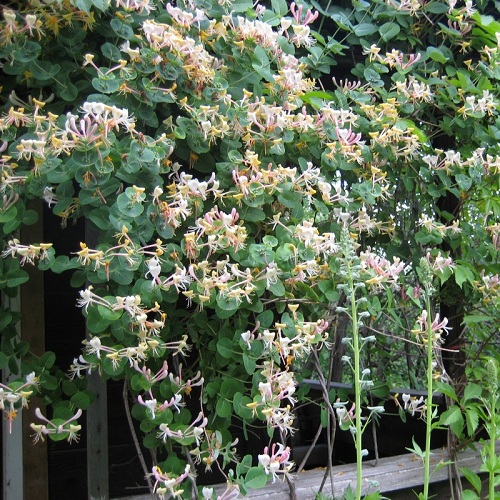
- The blue bird is a Siberian variety, ripens early, completely unpretentious and does not ill and it does not get sick, so it is ideal for novice gardens and gardeners. It gives a harvest for 3 years and fruits up to 25 years old extended berries with a wax chain. Fruits are distinguished by a gentle taste without characteristic of other varieties of sourness. From one bush you can get up to 2.5 kg of harvest.
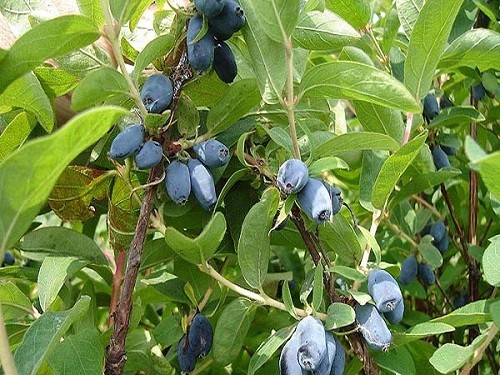
- Amphora is a frost-resistant average variety that can be grown in the northern regions of Russia. It grows up to 1.5 m in height, loves the neighborhood with Hallowing, Moraine and Altair. The fruction begins for 3 years, a berry with a length of about 2 cm of a characteristic bunny shape with a durable peel, slightly absorbed. From one bush, you can collect up to 1.3 kg of fruits.
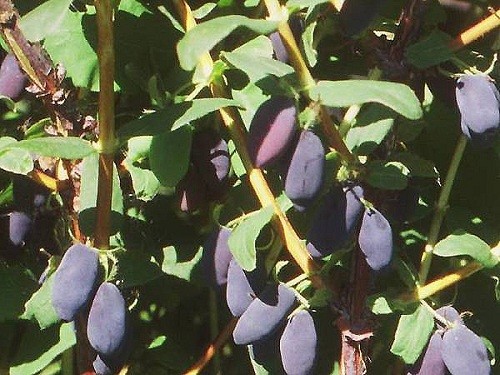
- Altair - Early variety, if you grow it in the southern regions. The plant is unpretentious, very rarely sick, grows up to 1.5 m in height. It is distinguished by a thick and squat crown, gives medium in size of berries with a pronounced wax rim on the peel. It is considered one of the most delicious grades of edible honeysuckle. From one bush, you can get up to 2.5 kg.
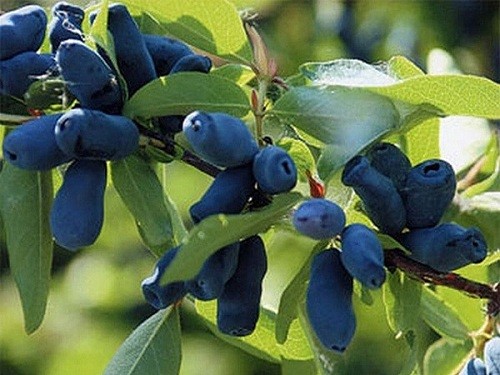
- Dolphin is a medieval variety suitable for breeding in regions with temperate climates. Flowers in spring and autumn, and therefore is characterized by low frost resistance. It grows up to 1.5 m in height, the crown is thick and rounded. It gives oblong fruits, the top of which resembles a "smile" of Dolphin, why the grade and got its name. The berry peel is dense and slightly buggy, with a bush every year you can collect up to 3 kg.
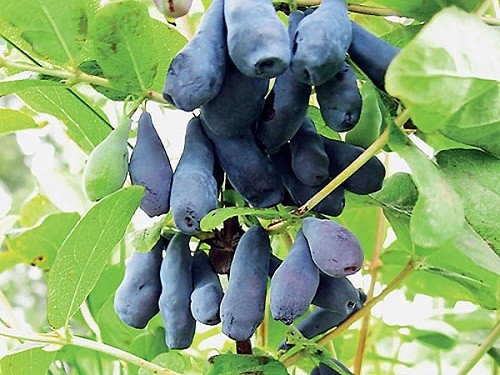
- Bakcharskaya is a mid-range grade up to 1.3 m with a compact crown. It gives the fruit of the pear shape with a dense skin, which does not allow them to reveal when collecting. Berries are not proud and have a pleasant sour-sweet taste. Baccharian honeysuckle is resistant to sprinkling, so at a time you can remove up to 60% of the crop (up to 2.5 kg from the bush).
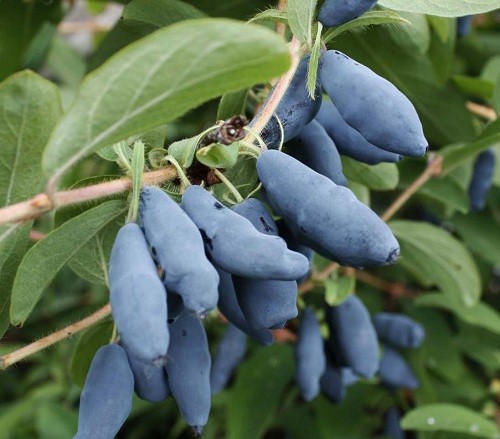
- The Leningrad Giant is a high-yielding grade, grows up to 1.5 m in height and begins to produce fruits for 3 years. And even though they ripen unevenly, the berries appear weakly and collect them very convenient, because they are collected in the borders. From one bush of the honeysuckle, the giant can be collected up to 3 kg.
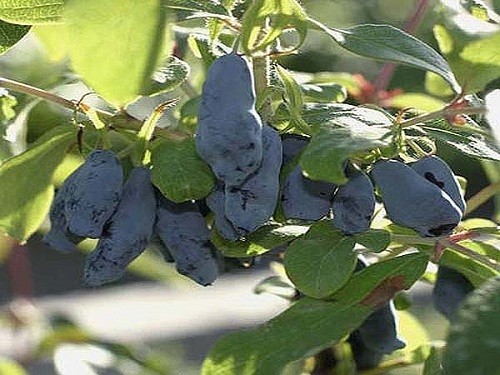
- Kamchadalka - a high-yielding average variety, grows up to 1.5 m in height, differs in frost resistance and high decorativeness. Thick foliage can decorate any exterior and form a living fence. At the same time, Kamchadalka gives large juicy fruits of the oblong shape with a thin skin. From one bush can be collected up to 3.5 kg.
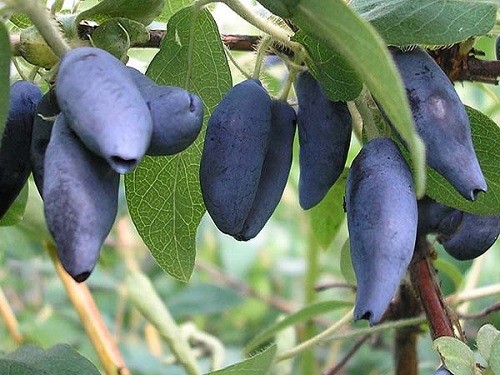
Regardless of the variety, the honeysuckle is good because with the minimum cash costs it gives maximum return. The plant perfectly adapts to new conditions and does not interfere with developing other cultures in the garden.
Edible honeysuckle
The edible honeysuckle in the gardens began to grow recently, and before it could be found only in the forests and groves. Fruits on wild shrubs smaller and tart, but breeding varieties can boast large and sweet berries, of which useful blanks for the winter are obtained. The honeysuckle opens the berry season, ripening before everyone and helping preventing spring avitaminosis. It has more valuable trace elements than in blueberries and blackberries.
Planting edible honeysuckle will be a reasonable contribution to the future. Mostly it is frost-resistant varieties that easily carry small freezes and give a rich harvest. Also, bushes can be used as agenic planting. They calmly grow in one place for about 20 years, and you can replant at any age. The feature of the honeysuckle is that with the onset of 3-4 years, the bark begins to endure from it, for which this plant was called "shameless". Under the crust is exposed to reddish wood, but it is a completely normal and natural process.
The harvest of next year is scheduled for the current summer in the kidneys in the sinuses of the upper leaves. The honeysuckle has a rod root system that deeply goes deep into the soil and goes beyond the crown of about half meter. Most roots through which nutrition comes are at a depth of 70-80 cm, which should be taken into account when transplanting. The honeysuckle is a completely unpretentious and useful plant, but the only inconvenience is in the uneven ripening of fruits. The most ripe and large berries fall on the ground, therefore it is important to pick them up immediately or retain a polyethylene film under the bushes.
Growing honeysuckle
Before planting a bush of the honeysuckle, it is necessary to correctly pick up a place for it on the plot. The plant will actively develop and well be fruitful only on a well-lit space, where there are no drafts, and the land is enriched with organic and minerals. The honeysuckle does not like hill and shaded, it is also better not to plant it in a non-fermented sandy ground.
Useful advice: Specialists recommend buying and planting several varieties, as cross-pollination increases the taste of berries.
Seed fashion
The honeysuckle can be multiplied by a seed and vegetative way. With seeds will have to tinker and gain patience, but sometimes there is no other alternative.
How to germinate the honeysuckle from seeds:
- In late September-early October, take a wide vessel with low-sidelights and pour the sand layer into it. Understand him and scatter him and scat out the seeds, then sprinkle them with sand and publ again.
- Cover the container with a plastic film and put on the lower shelf of the refrigerator to the department for vegetables.
- Once in 2 weeks splash sand from the spray and repeat the procedure before the spring.
- In March, prepare a wooden box with a height of 20 cm and pour into it the soil fertile mixture by 10-12 cm, plenty of water. Evenly crumble on the ground with seeds with seeds, suck it with a layer of 2 cm, slightly compact and sprinkle from the sprayer.
- Cover the box with a film again and rendered it on fresh air into the garden if less warm temperatures without frosts have been installed. It is desirable that at least 5-6 hours per day on the box fell solar rays.
- After the first shoots appear, remove the film. For irrigation of still rapid seedlings, use a spray gun.
- Grow seedlings in the box all summer, and in early September before the onset of the first frosts, transfer them to an open soil. To do this, prepare a narrow bed, having overlooked its boards.
- Plush the flow of mulch from false foliage or needles to reduce the evaporation of moisture to a minimum.
Seeds can be bought on the market, but if your friends or neighbors are growing well fruitful honeysuckle, ask for a little berries, frow them and fill with water for 30-40 minutes. Then you can strain the seeds or immediately hang them into the open ground. To do this, prepare the garden, jumped the soil and pouring a layer of sand with a thickness of about 3 cm. Pour it easily "compote" with seeds and sprinkle with a layer of wet land.
The first shoots will appear in a month, but gentle stalks should be protected from birds and rain, covering them with film. The optimal option is to install metal arcs over the bed, throw the film on them, but do not delay the ends to provide aeration. In hot weather, the film is better replaced by spunbond or Loutrasil, or just throw a cut of gauze so that the seedlings do not get burns from sunlight.
The seed method of breeding the honeysuckle is quite unpopular, since the first berries have to wait at least 4-5 years. At the same time, the plant loses its varietal characteristics. For this reason, the gardeners often determine the honeysuckle with cuttings or glasses.
Vegetative way
It is possible to multiply the plant dividing the bush only if he was at least 8 years old, but not more than 15. The wood is very hard, so it will take a saw for work. At each of the parts there should be at least 2 skeletal branches, a pair of stems, and the length of each root should be at least 20 cm. Trim branches are best in a secitor, retreating 30-40 cm.
The drawing is the most effective way of reproducing the honeysuckle. It allows you to send up to 200 bushes from one plant. For the workpiece of the widespread cuttings, the most powerful threads of the alphabet with a diameter of at least 7 mm are suitable. It is necessary to cut them up to the moment the kidney dissolve and active inactivity (approximately in the mid-end of March). The cuttings are cut into a segment of about 15 cm long and planted into a greenhouse or an open ground, if the earth has already managed to hurt. Cuts must be opened by 10 cm, leaving the kidneys hanging on the surface. To increase the chances of adaptability and facilitate the adaptation period, it is recommended to cover the cuttings with a polyethylene film or underfloor material. 25-30 days after rooting, the root system will begin to develop.
Green cuttings are suitable for breeding. Moreover, according to some statements, the highest quality cuttings come out just from young green shoots cut at the time of stopping growth. The berries of the honeysuckle at this time are just beginning to recruit blue. The thickness of the young escape should be about 6-8 mm.
Useful advice: To increase the survival of cuttings, treat them "root". And the drugs "Hydrogel" and "Aquadon" will be able to maintain soil moisture.
The next autumn, grown and strengthened seedlings can be resettled at a permanent place. It is recommended to use AVA fertilizer by making 1 tbsp. l. preparation for each bush. It replaces potassium, ash and superphosphate. Repeated feeding is made only after 3 years. Then the drug must be pulled into the top of the soil over the perimeter of the crown within a radius of 50 cm. More spring honeysuckle does not need any fertilizers. You only need to water the plant and make the organic after harvesting.
Planting the honeysuckle
The honeysuckle dismisses his kidneys much earlier than many garden plants, so it is best to plant it from autumn: at the end of September or early October. At this time, the movement of juices has already slowed down, and the bush began to "fall asleep", which means it is not so painful to survive the stressful situation. Usually in the role of planting material are the rooted cuttings.
Since from the description of the honest, you already know that this is a cross-pollinated plant, it is better to plant several varieties nearby, but not too close - between the bushes should be at least 1.5 m. The plot should not be bludging with drafts and placed on a strong hill. The best honest feels near fences and fences, as well as in the neighborhood with other bushes, but only if they do not block sunlight.
Before boarding the bush, for a permanent place, remove all the weeds in advance, especially if they are perennial. Since the plant is undemandingly to the soil, you can not worry about this expense - suesy, loyal and forest land fit. The only exception is highly sandy soils. If the soil acidity is increased, add dolomite flour, lime or chalk into it. Perhaps you will be interested in an article " Dolomite Flour: Application, Features».
Drop the pit with a depth of about 45 cm and with a diameter of 50 cm. If you grow the honeysuckle with rows, leave 1.5-2 m between the bushes, and between the rows - 2.5-3 m. In the dug hole, add 3 st. l. Nitroposki, a couple of glasses of ash and some organodes, mix it with a soil, pour and cover the pit with a film for 4-5 days. Omitting a sapling in the pit, do not allow the roots and the formation of the "air pockets". Bloat the root neck is no more than 2-3 cm.
The most responsible period is spring. At this time, seedlings require special care, which will depend on their further fate. The bushes need to be emphasized, after which itching the earth around to a depth of about 5 cm and sketch mulch from peat or manure.
Care for honeysuckle
The honeysuckle is very unpretentious, and it concerns both edible and decorative varieties. The first 5-7 years, the bush grows very intensively, after which he slows down and gives fruit, growing in one place for 15-20 years. Then it is desirable to transition to the other end of the garden. In principle, you can generally pay honeysuckle to the minimum of attention, but if you want to consistently get rich yields, you have to work a little.
Basic rules of care:
- Regularly water the bush, especially in the fruitful period. Each day one busist requires a minimum of 1 bucket of water, and a sultry summer portion can be safely increased.
- The deoxidation of the soil is required to create neutral soil. The procedure must be repeated annually 1 time over the summer, using wood ash divorced in water.
- In the late autumn, you must make fertilizers and feed the shrub that next summer he pleased with a good harvest. Take it in a year using a mixture of 4 kg of compost, 2 tbsp. l. Superphosphate and 100 g of wood ash. In the spring, you can make an ammonium saltper 15g / m².
- Although the honeysuckle does not hurt anything, for the prevention of diseases and the liquidation of parasites, it is still recommended to be treated with chemicals, but if the pests are not visible, this item can be skipped.
- The land around the honeysuckle is recommended to periodically loose and constantly pour to ensure the aeration of the root system. In September, after the fruiting the soil should be switched to prepare a bush to wintering.
- From time to time it is necessary to cut the old branches so that they do not block sunlight to younger shoots. The first trimming can be done no earlier than the plant will be 5 years and it will be fully formed. It is best to do this in early April.
Pests and diseases of the honeysuckle
When the honeysuckle begins to pour the berries with juice, the likelihood of pests is great: leftimeters and caterpillars who love to bite the tender tops of young shoots. Also often the honeysuckle is striking the failure, but this parasite does not forget and other garden crops. She sucks juice from the leaves, as a result of which they are quickly yellow and faded.
Also on the honeysuckle there may be a ventiga. It is possible to recognize its presence by examining the boring of the plant - it is manifested in the form of convex tubercles. The shields sucks the life juices from the bark and can lead to the dying of the branches and the death of the entire plant. Mildly dew may appear very rarely, but you can quickly cope with "phytoosporin".
The safest and most simple way to combat all the above pests is the spraying of plants by the plant "Phytoverm", "Agramentin" or "Spark Bio". These are biological preparations that are not able to harm crop and other plants.
Planting the honeysuckle on the site is a faithful solution for those who want to diversify their diet with delicious and useful berries, and besides, decorate the garden with a magnifying shrub.

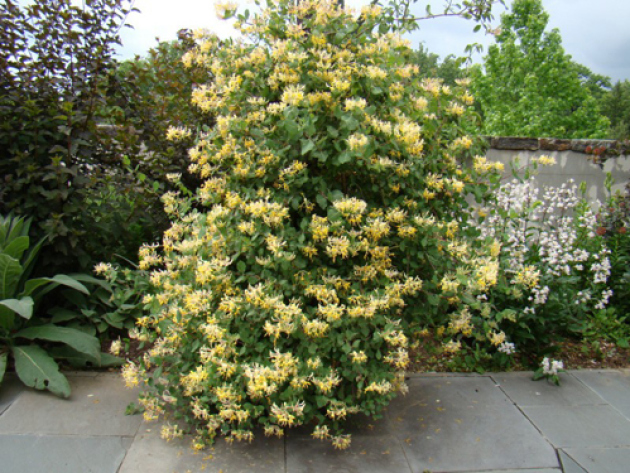
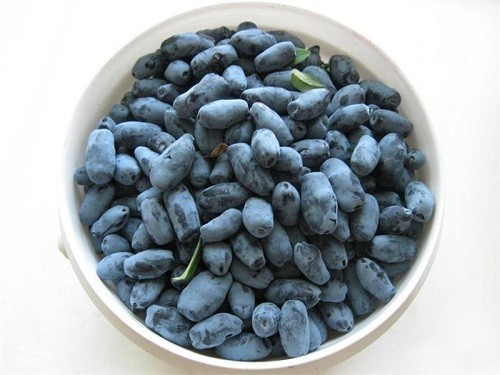
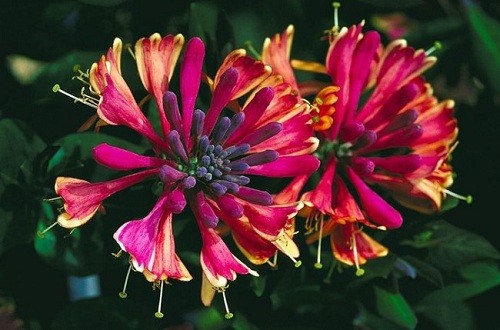
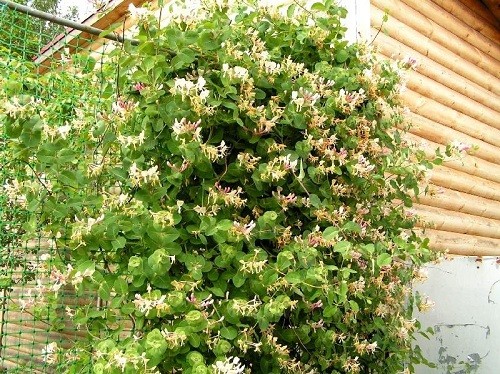
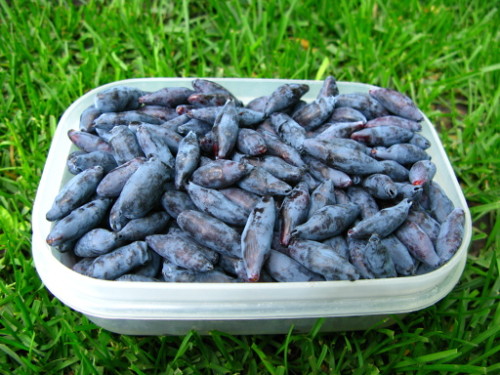
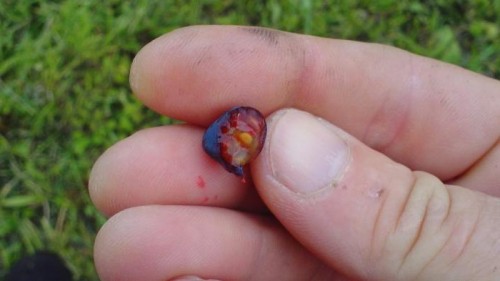
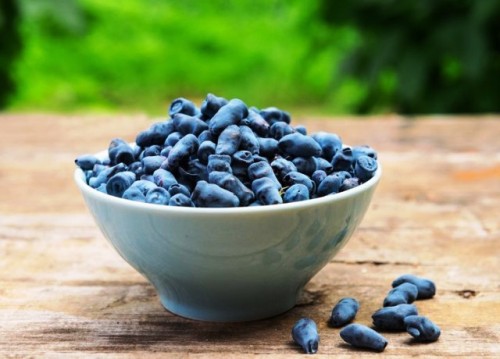
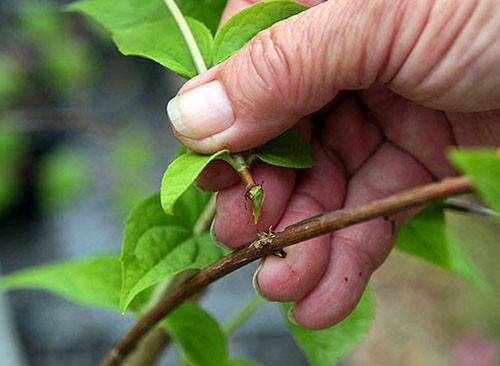
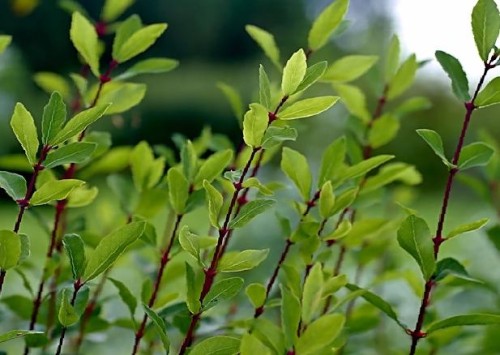
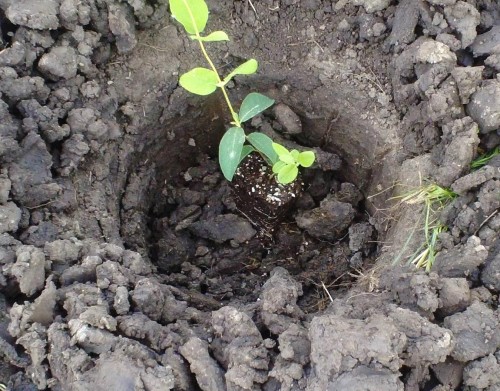
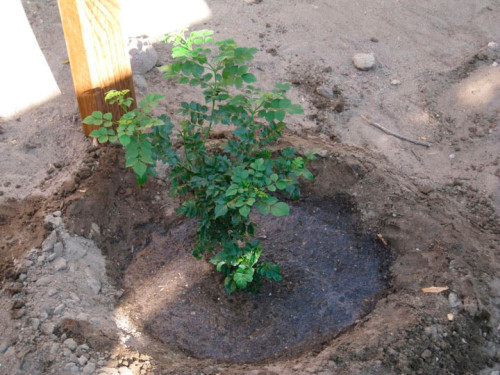
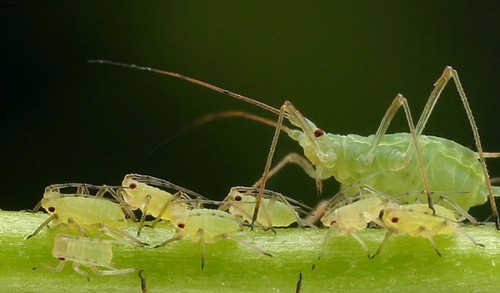
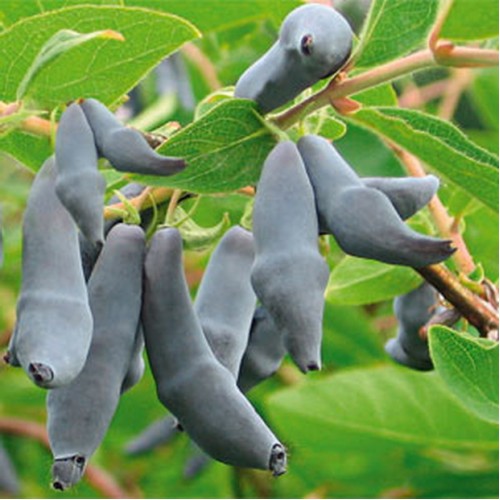

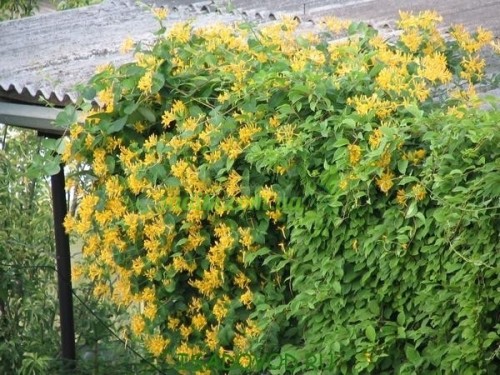
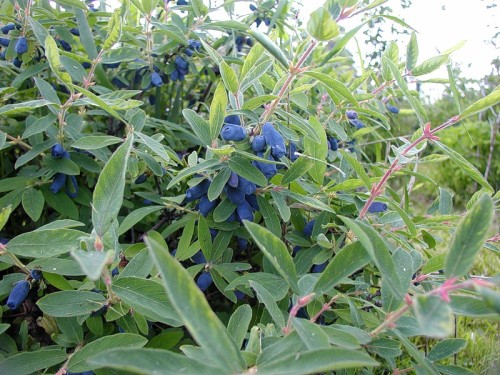
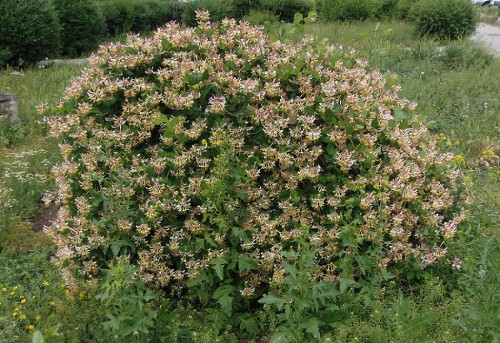












 Start a discussion ...
Start a discussion ...